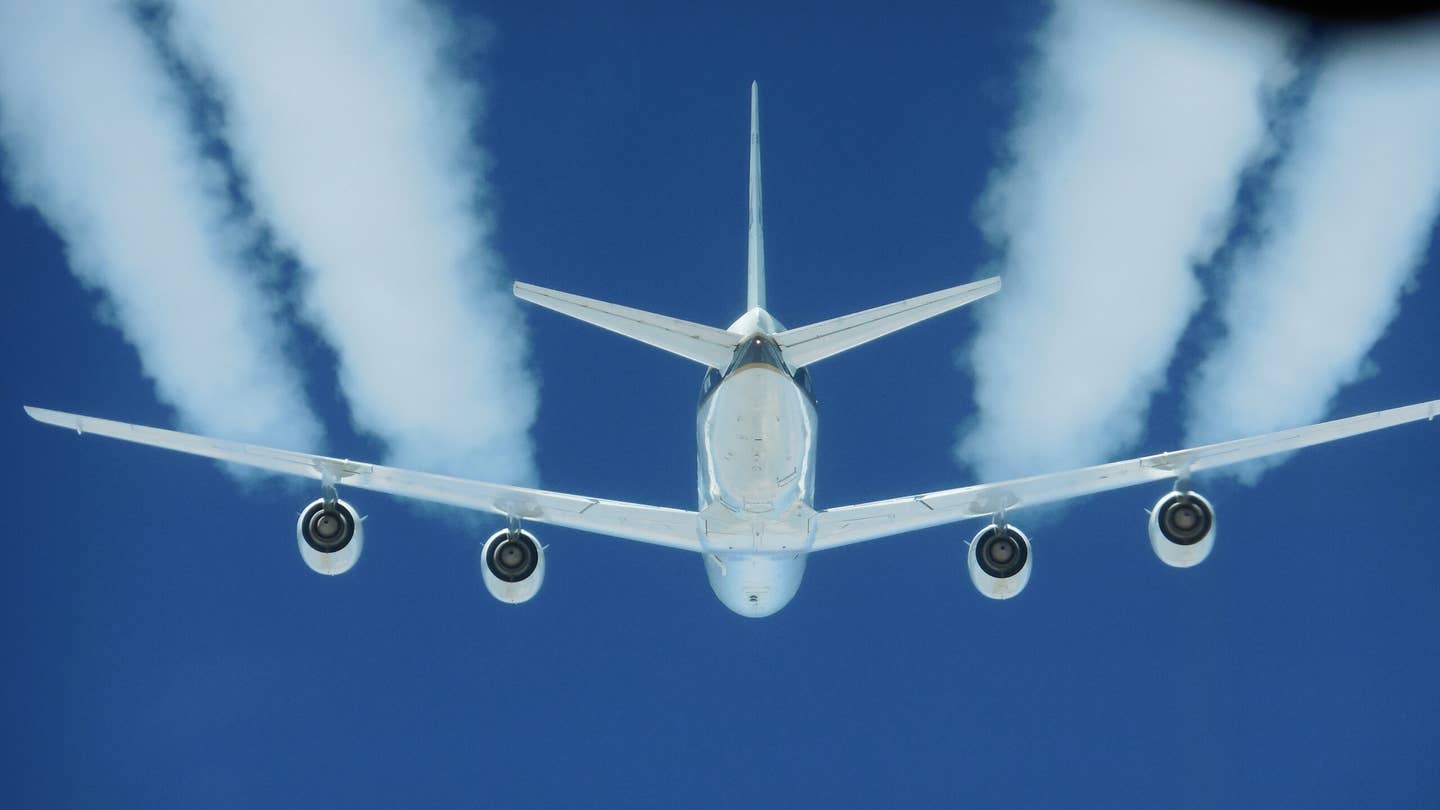
A blend of aviation fuel and biofuel could reduce the harmful effects of contrails produced by aircraft. Edward Winstead
Powering jet engines with a 50-50 blend of biofuel and aviation fuel reduces particle emissions in their exhaust by as much as 50 to 70 percent, according to a NASA-led study recently published in the journal Nature.
Part of the agency’s Alternative Fuel Effects on Contrails and Cruise Emissions Study (ACCESS) data was collected on the effects of alternative fuels on engine performance, emissions and aircraft-generated contrails on aircraft tested at altitudes flown by commercial airliners.
According to NASA, contrails are produced when hot aircraft-engine exhaust mixes with cold air, typically at cruise altitudes several miles above the Earth’s surface. Composed primarily of water in the form of ice crystals, contrails create long-lasting, sometimes extensive clouds that would not otherwise be present in the atmosphere. The agency reports that contrails, and the cirrus clouds that form from them, have a greater impact on Earth’s atmosphere than all carbon dioxide emissions from aircraft since the first powered flight by the Wright brothers.
“Soot emissions also are a major driver of contrail properties and their formation,” says Bruce Anderson, ACCESS project scientist at NASA’s Langley Research Center. “As a result, the observed particle reductions we’ve measured during ACCESS should directly translate into reduced ice crystal concentrations in contrails, which in turn should help minimize their impact on Earth’s environment.”
Data was collected during flight tests in 2013 and 2014 near NASA’s Armstrong Flight Research Center in Edwards, California. The tests involved flying NASA’s DC-8 flying at altitudes up to 40,000 feet, while its four engines burned a 50-50 blend of aviation fuel and biofuel — a renewable alternative produced from camelina plant oil. Three aircraft followed behind the DC-8, measuring emissions and studying contrail formation from a range of 300 feet to more than 20 miles.
The trailing aircraft included NASA’s HU-25C Guardian, a Falcon 20-E5 owned by German Aerospace Center, and a CT-133 jet from the National Research Council of Canada.
“This was the first time we have quantified the amount of soot particles emitted by jet engines while burning a 50-50 blend of biofuel in flight,” says Rich Moore, lead author of the Nature report.
NASA reports plans to continue these studies to better understand and demonstrate the potential benefits of replacing fuels in aircraft with biofuels.

Sign-up for newsletters & special offers!
Get the latest FLYING stories & special offers delivered directly to your inbox






